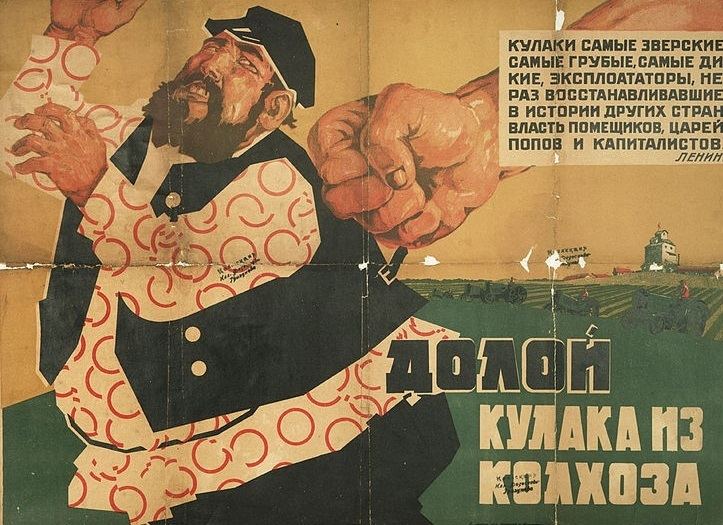 | ||
Dekulakization (Russian: раскулачивание, raskulachivanie, Ukrainian: розкуркулення, rozkurkulennia) was the Soviet campaign of political repressions, including arrests, deportations, and executions of millions of the better-off peasants and their families in 1929–1932. The richer peasants were labeled kulaks and considered class enemies. More than 1.8 million peasants were deported in 1930–1931. The stated purpose of the campaign was to fight the counter-revolution and build socialism in the countryside. This policy was accomplished simultaneously with collectivization in the USSR and effectively brought all agriculture and peasants in Soviet Russia under state control.
The "liquidation of the kulaks as a class" was announced by Joseph Stalin on 27 December 1929. Stalin had said that "Now we have the opportunity to carry out a resolute offensive against the kulaks, break their resistance, eliminate them as a class and replace their production with the production of kolkhozes and sovkhozes." The decision was formalized in a resolution "On measures for the elimination of kulak households in districts of comprehensive collectivization" on 30 January 1930. All kulaks were divided into three categories: (I) to be shot or imprisoned as decided by the local secret political police; (II) to be sent to Siberia, North, the Urals or Kazakhstan, after confiscation of their property; and (III) to be evicted from their houses and used in labour colonies within their own districts. OGPU secret police chief Efim Georgievich Evdokimov (1891–1939) organized and supervised the roundup of peasants and the mass executions.
A combination of dekulakization, collectivization, and other repressive policies led to mass starvation in many parts of the Soviet Union and the death of an estimated 11 million peasants from 1929-1933, including 4 million during the dekulakization campaign. The results were soon known outside the Soviet Union. In 1941, the American journalist H. R. Knickerbocker wrote "It is a conservative estimate to say that some 5,000,000 [kulaks] ... died at once, or within a few years."
